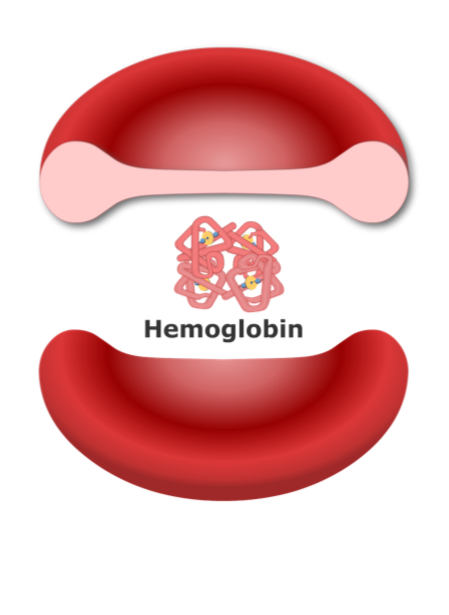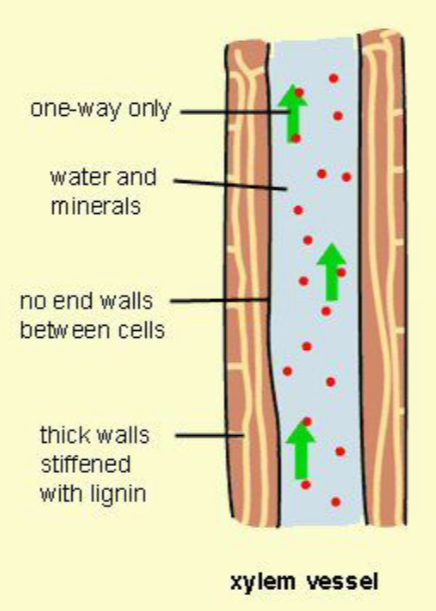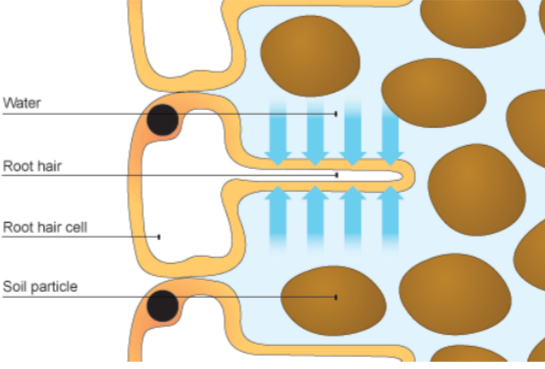
Chapter 1 - Cells and it’s Organization
Plant and Animal Cells:
They are the basic building blocks of the structure and functions of organisms.
The table below shows the similarities and differences between animal and plant cells.
![]()
Cell Organelles: (present in both cells)
Cytoplasm: a jelly like substance in which all the organelles are suspended. Here’s where the chemical reactions in the cell take place.
Nucleus: contains the chromosomes and the hereditary material of the cell.
Cell Membrane: is a partially permeable and the outer most membrane of the cell. It controls the movement of substances into and out of the cells.
Mitochondria: carry out aerobic respiration to release energy, this energy is used to carry out cellular activities.
Vacuole:
In animal cell: store water and food substances
In plant cell: store water with food substances and mineral salts, also takes in waste products and water.
Organelles Unique to Either Plant or Animal Cells:
Cell wall: present in only plant cells, made up of cellulose, gives the cell its shape and protects it from injury.
Chloroplasts: present in only plant cells, contain chlorophyll, a green pigment which plays a vital role in photosynthesis.
Centrioles: present in only animal cells, help with cell division.
Specialized Cells:
Red Blood Cells:
Function: deliver oxygen to the body tissues via the blood.
Cell structure adaptations:
• RBC contain haemoglobin which binds with oxygen and transports it from the lungs to all parts of the body
• RBCs have no nucleus, thus have more capacity for haemoglobin
• RBCs have a flattened biconcave shape. This increases the surface area to volume ratio for faster diffusion of oxygen. It also allows the cell to be more flexible when squeezing through blood capillaries.

Xylem Vessels:
Function:
(1) Conduct water and mineral salts from the roots to the leaves of the plant.
(2) mechanical support of plants
Cell structure adaptations:
(1) Absence of protoplasm and cross-walls which could impede water flow through the lumen
(2) Deposition of lignin on the cell walls which strengthens vessel walls, providing support

Root Hair Cells:
Function: Extend into the soil to absorb water and mineral salts.
Cell structure adaptations: root hair is long and narrow, this increases the surface area to volume ratio of the cell, so that water and mineral salts can be efficiently absorbed.

Chapter 1 - Cells and it’s Organization
Plant and Animal Cells:
They are the basic building blocks of the structure and functions of organisms.
The table below shows the similarities and differences between animal and plant cells.
![]()
Cell Organelles: (present in both cells)
Cytoplasm: a jelly like substance in which all the organelles are suspended. Here’s where the chemical reactions in the cell take place.
Nucleus: contains the chromosomes and the hereditary material of the cell.
Cell Membrane: is a partially permeable and the outer most membrane of the cell. It controls the movement of substances into and out of the cells.
Mitochondria: carry out aerobic respiration to release energy, this energy is used to carry out cellular activities.
Vacuole:
In animal cell: store water and food substances
In plant cell: store water with food substances and mineral salts, also takes in waste products and water.
Organelles Unique to Either Plant or Animal Cells:
Cell wall: present in only plant cells, made up of cellulose, gives the cell its shape and protects it from injury.
Chloroplasts: present in only plant cells, contain chlorophyll, a green pigment which plays a vital role in photosynthesis.
Centrioles: present in only animal cells, help with cell division.
Specialized Cells:
Red Blood Cells:
Function: deliver oxygen to the body tissues via the blood.
Cell structure adaptations:
• RBC contain haemoglobin which binds with oxygen and transports it from the lungs to all parts of the body
• RBCs have no nucleus, thus have more capacity for haemoglobin
• RBCs have a flattened biconcave shape. This increases the surface area to volume ratio for faster diffusion of oxygen. It also allows the cell to be more flexible when squeezing through blood capillaries.

Xylem Vessels:
Function:
(1) Conduct water and mineral salts from the roots to the leaves of the plant.
(2) mechanical support of plants
Cell structure adaptations:
(1) Absence of protoplasm and cross-walls which could impede water flow through the lumen
(2) Deposition of lignin on the cell walls which strengthens vessel walls, providing support

Root Hair Cells:
Function: Extend into the soil to absorb water and mineral salts.
Cell structure adaptations: root hair is long and narrow, this increases the surface area to volume ratio of the cell, so that water and mineral salts can be efficiently absorbed.

 Knowt
Knowt